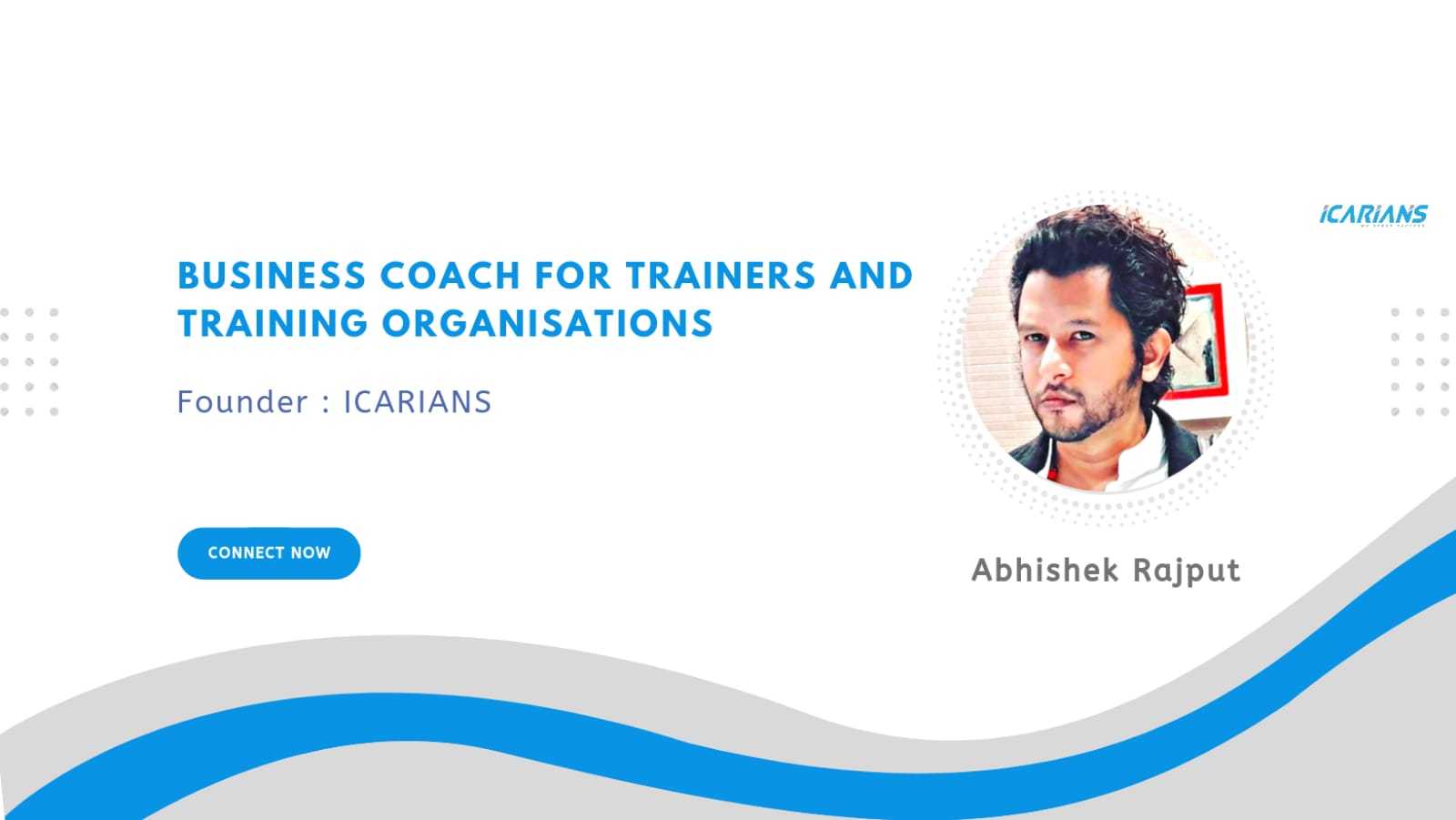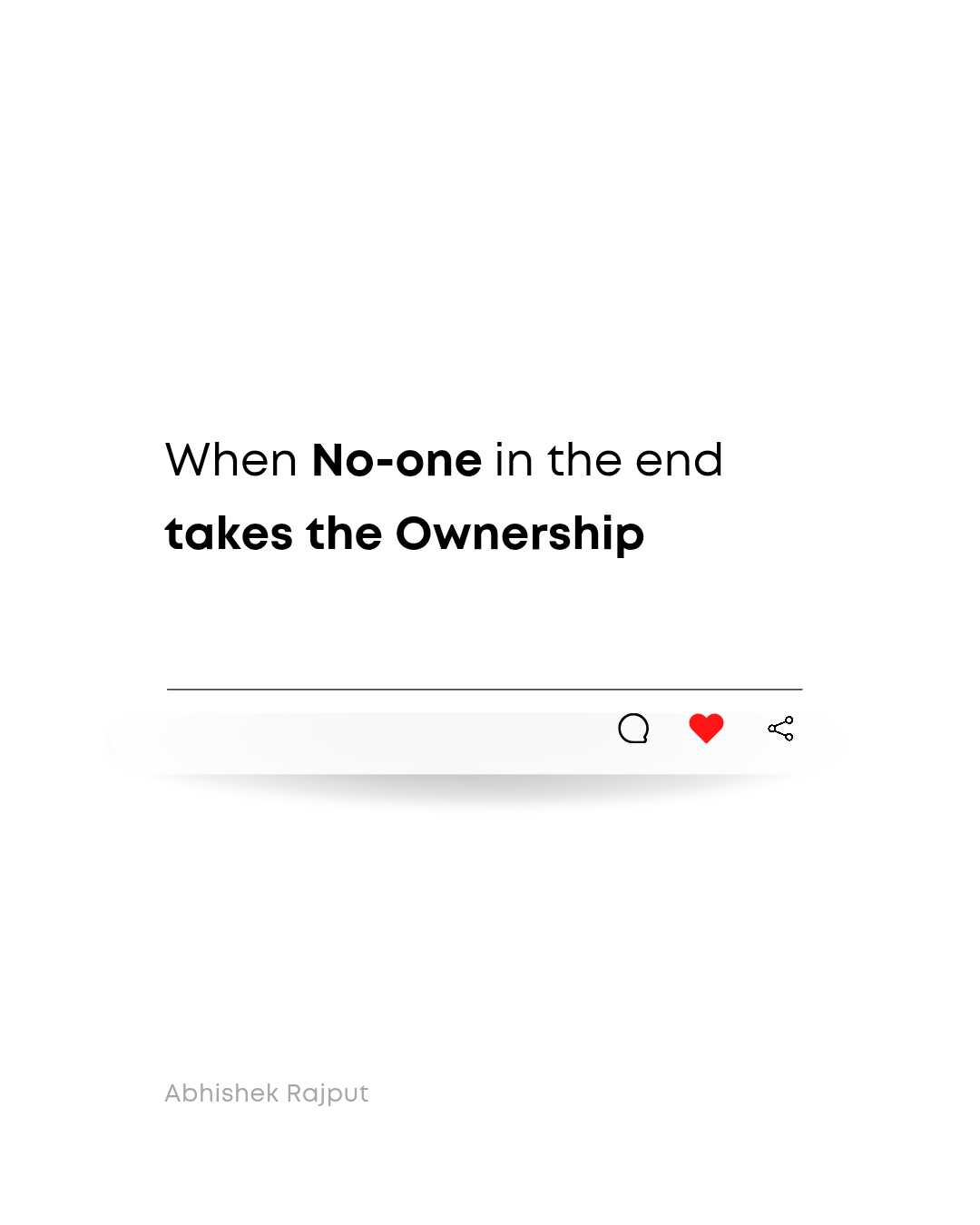Just wrapped a marathon session working with few colleagues designing a new training module for a client.
My laptop’s still humming, and my brain’s racing… not just from the long hours, but from something a freelance trainer told me years ago.
She was a rising star in L&D, someone I admired for her grit.
After a workshop on content creation, she leaned in and said, “The second you stop evolving your content, you’re no longer serving your learners.
”At the time, I smiled and nodded. It felt like solid advice. But honestly, I was probably thinking about my next deadline.
9 Years rolled by. I built my company, created countless training programs, and launched a platform for educators to share their work.
Then, last week, a corporate client asked for a course that blended AI-driven insights on leadership with storytelling. It pushed me to rethink everything I thought I knew about content design.
That freelancer’s words hit me like a lightning bolt. Suddenly, her advice wasn’t just a passing comment. It was a wake-up call: in L&D, standing still is falling behind.
The world of training is a whirlwind. New tech emerges, learner needs shift, and organizations demand measurable impact. What captivated an audience yesterday might bore them tomorrow.
It’s tempting to stick with what’s familiar, to lean on the same old templates or tools. But the best trainers, corporate or freelance are relentless innovators.
They’re curious, they experiment, and they’re always hunting for ways to make learning stick.
This isn’t about chasing fads. It’s about committing to evolution. It’s about studying trends, testing bold ideas, and ensuring every piece of content whether a course, book, or workshop delivers real value.
That freelancer taught me a lesson I’ll never forget: growth is the heart of great training. The most impactful trainers aren’t the ones with all the answers, they’re the ones who keep asking questions.
Do you keep asking questions..!
Abhishek Rajput


Ever been in a meeting where one person talks… and talks… and talks?
You watch as:
- Eyes glaze over.
- People subtly check their phones.
- The energy in the room slowly disappears.
The discussion isn’t engaging, 𝗶𝘁’𝘀 𝗮 𝗼𝗻𝗲-𝘄𝗮𝘆 𝗯𝗿𝗼𝗮𝗱𝗰𝗮𝘀𝘁.
As trainers, managers, or leaders, meetings aren’t meant for one voice, they’re meant for many minds.
So how do you shift from monologue to meaningful discussion?
I use the 𝗦.𝗣.𝗔.𝗖.𝗘. 𝗠𝗲𝘁𝗵𝗼𝗱 — a simple way to transform dull meetings into dynamic conversations:
𝗘𝘅𝗮𝗺𝗽𝗹𝗲 -
1. Set the Tone — “This is an open discussion. Let’s keep it interactive.”
2. Pause for Input — After key points, ask, “What do you think?”
3. Assign Speaking Turns — “Let’s go around, everyone share one insight.”
4. Challenge with Questions — “Does anyone see this differently?”
5. Engage with Purpose — Tie contributions back to the goal: “Great point! Here’s how we apply that.”
𝗪𝗵𝘆 𝗱𝗼𝗲𝘀 𝘁𝗵𝗶𝘀 𝘄𝗼𝗿𝗸?
✅ It breaks passive listening and invites active thinking.
✅ It ensures everyone has a voice—not just the loudest person.
✅ It keeps meetings engaging, efficient, and effective.
𝗧𝗵𝗲 𝘀𝗲𝗰𝗿𝗲𝘁: A great meeting isn’t measured by how much is said, but by how many contribute.
So the next time a meeting starts to feel like a lecture, don’t just sit through it—S.P.A.C.E. it out.
Because leadership isn’t about speaking the most—it’s about making space for ideas to thrive.
How do you keep meetings interactive and engaging?
Let’s swap strategies!
Abhishek Rajput
.
.
.
#trainers #managers #leaders

Have you ever been in a situation 𝘄𝗵𝗲𝗿𝗲 𝗮 𝘁𝗮𝘀𝗸 𝗶𝘀 𝗱𝗶𝘀𝗰𝘂𝘀𝘀𝗲𝗱, 𝗯𝘂𝘁 𝘄𝗵𝗲𝗻 𝘁𝗵𝗲 𝗱𝗲𝗮𝗱𝗹𝗶𝗻𝗲 𝗰𝗼𝗺𝗲𝘀… 𝗻𝗼𝘁𝗵𝗶𝗻𝗴 𝗵𝗮𝗽𝗽𝗲𝗻𝘀?
You hear responses like:
- “Oh, I thought someone else was handling that.”
- “Was that my responsibility?”
- “I didn’t realize it was urgent.”
And just like that, the task falls through the cracks.
As leaders, this is a silent productivity killer. 𝗡𝗼 𝗼𝘄𝗻𝗲𝗿𝘀𝗵𝗶𝗽 𝗺𝗲𝗮𝗻𝘀 𝗻𝗼 𝗮𝗰𝘁𝗶𝗼𝗻.
So how do you turn passive listeners into active owners?
One of my favourite is 𝗢.𝗪.𝗡. 𝗠𝗲𝘁𝗵𝗼𝗱 — a powerful way to ensure tasks don’t just get discussed, but actually get done:
1. Outline Clear Responsibilities — “David, you’ll lead this, and Priya, you’ll support.”
2. Write It Down — Assign tasks visibly in a shared document, email, or project board.
3. Normalize Accountability — “Let’s check in next week to review progress.”
𝗪𝗵𝘆 𝗱𝗼𝗲𝘀 𝘁𝗵𝗶𝘀 𝘄𝗼𝗿𝗸?
✅ It removes ambiguity — everyone knows their role.
✅ It reinforces commitment — verbal agreements get forgotten, written ones don’t.
✅ It shifts the mindset — from “I’ll try” to “I own this.”
𝗧𝗵𝗲 𝘀𝗲𝗰𝗿𝗲𝘁: People don’t avoid responsibility — they avoid unclear expectations.
So the next time a task lingers in limbo, don’t assume someone will pick it up — O.W.N. it.
Because leadership isn’t just about delegating — it’s about creating a culture of ownership.
How do you ensure accountability in your team?
Let’s swap strategies.
Abhishek Rajput
#trainers #managers #leaders

𝗘𝘃𝗲𝗿 𝗻𝗼𝘁𝗶𝗰𝗲𝗱 𝘁𝗵𝗶𝘀 𝗶𝗻 𝗮 𝗺𝗲𝗲𝘁𝗶𝗻𝗴 or training session?
You offer feedback to your employee, let's say to Alex, a constructive, clear, and well-meaning feedback — but suddenly:
- He crosses his arms and looks away.
- His tone sharpens as he defends his work.
- The room tenses up — feedback has turned into a battlefield.
𝗪𝗵𝘆 𝗱𝗼𝗲𝘀 𝘁𝗵𝗶𝘀 𝗵𝗮𝗽𝗽𝗲𝗻?
Because feedback often feels personal — even when it’s not.
As trainers, managers, or leaders, your goal isn’t just to give feedback — it’s to make sure it’s received without triggering defensiveness.
So how do you turn feedback from friction into fuel?
𝗨𝘀𝗲 𝘁𝗵𝗲 𝗖.𝗔.𝗟.𝗠. 𝗠𝗲𝘁𝗵𝗼𝗱 — a simple yet effective way to deliver feedback that builds trust, not tension:
𝟭. 𝗖𝗹𝗮𝗿𝗶𝗳𝘆 𝘁𝗵𝗲 𝗜𝗻𝘁𝗲𝗻𝘁 — “I’m sharing this because I want us to grow together.”
𝟮. 𝗔𝘀𝗸 𝗳𝗼𝗿 𝗧𝗵𝗲𝗶𝗿 𝗩𝗶𝗲𝘄 — “How do you feel about the project so far?”
𝟯. 𝗟𝗶𝗻𝗸 𝘁𝗼 𝗦𝗼𝗹𝘂𝘁𝗶𝗼𝗻𝘀 — “Here’s what we can do to strengthen this.”
𝟰. 𝗠𝗮𝗶𝗻𝘁𝗮𝗶𝗻 𝗣𝗼𝘀𝗶𝘁𝗶𝘃𝗶𝘁𝘆 — “Your effort is clear — let’s build on it.”
Why does this work?
✅ It shifts feedback from attack to collaboration.
✅ It lowers defenses by starting with empathy.
✅ It keeps the focus on improvement, not blame.
𝗧𝗵𝗲 𝘀𝗲𝗰𝗿𝗲𝘁: Feedback shouldn’t feel like a spotlight on flaws — it should feel like a shared path to growth.
So the next time someone bristles at feedback, don’t push harder — C.A.L.M. the conversation.
Because leadership isn’t about pointing fingers — it’s about pointing forward.
By the way how do you give feedback without sparking defensiveness?
Let’s swap strategies.
Abhishek Rajput
.
.
.
#leaders #managers #trainers #icarians

Have you ever led a meeting or training session 𝘄𝗵𝗲𝗿𝗲 𝗮 𝗵𝗲𝗮𝘃𝘆 𝘀𝗶𝗹𝗲𝗻𝗰𝗲 𝗵𝗮𝗻𝗴𝘀 𝗶𝗻 𝘁𝗵𝗲 𝗮𝗶𝗿?
You ask a question — nothing.
You suggest an idea — blank stares.
You open the floor for discussion — no one responded
Slowly, the room feels heavier. Awkward. Unproductive.
As a trainer, manager, or leader, this silence isn’t just a lack of words — it’s a message that something is still missing.
𝗕𝘂𝘁 𝗵𝗲𝗿𝗲’𝘀 𝘁𝗵𝗲 𝘁𝗿𝘂𝘁𝗵:
Silence isn’t the problem — it's how you respond to it.
So how do you turn that silence into a spark?
My favourite is the 𝗦.𝗜.𝗟.𝗘.𝗡.𝗧. 𝗠𝗲𝘁𝗵𝗼𝗱 — a smart way to break the ice and ignite engagement without pressuring anyone:
1. Stay Calm — Don’t rush to fill the silence. Let it breathe.
2. Invite Participation — “Let’s hear from someone who hasn’t spoken yet.”
3. Listen Actively — Acknowledge responses with genuine interest, not just nods.
4. Encourage Thoughtfulness — “Take a moment to gather your thoughts — no rush.”
5. Normalize Quietness — “Silence is fine — it means we’re thinking.”
6. Toss the Mic — “Mr. Sharma, what’s your take on this?” (Gently direct the flow.)
The Secret Confidence Booster: You don’t fight silence — you use it as a tool for deeper thinking.
So the next time a room goes quiet, don’t panic — Just use S.I.L.E.N.T..
𝗕𝗲𝗰𝗮𝘂𝘀𝗲 𝗹𝗲𝗮𝗱𝗲𝗿𝘀𝗵𝗶𝗽 𝗶𝘀𝗻’𝘁 𝗮𝗯𝗼𝘂𝘁 𝗮𝗹𝘄𝗮𝘆𝘀 𝗳𝗶𝗹𝗹𝗶𝗻𝗴 𝘁𝗵𝗲 𝘀𝗶𝗹𝗲𝗻𝗰𝗲 — it’s about giving space for voices to emerge.
By the way how do you handle silent moments in meetings or training sessions?
Let’s swap strategies!
Abhishek Rajput
.
.
.
.
#trainers #managers #leaders #icarians








